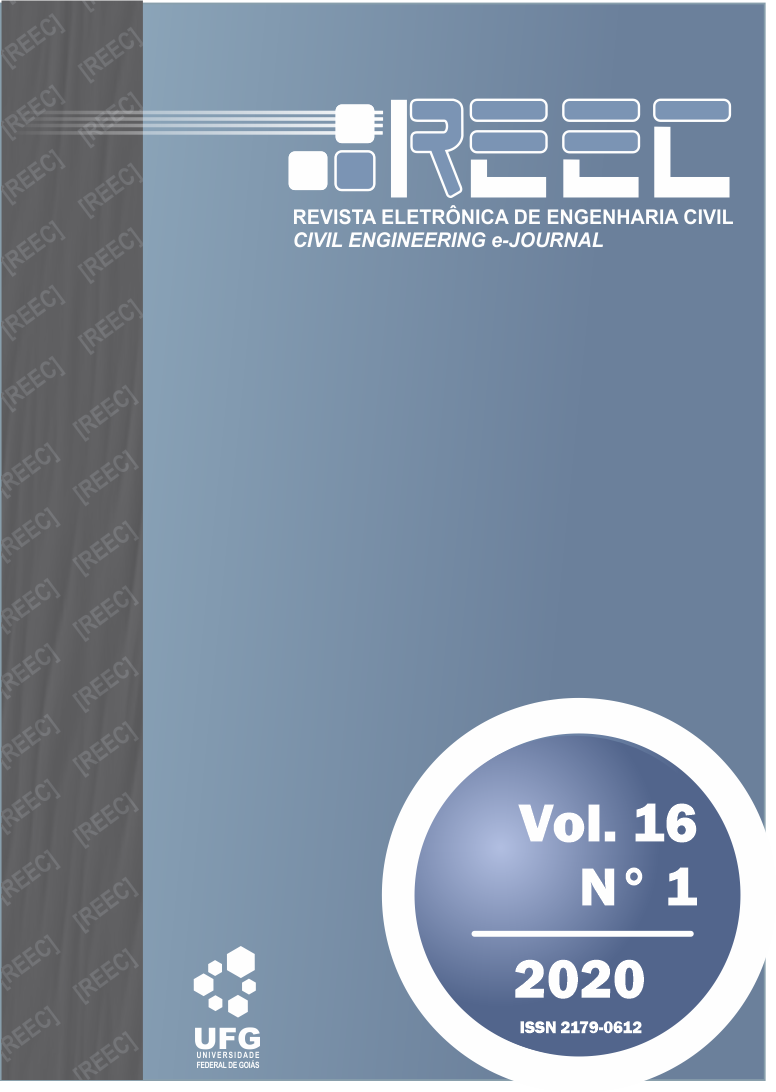Effect of steel and polymeric fibers addition in compressive strength of ultra high performance concrete
DOI:
https://doi.org/10.5216/reec.v16i1.50503Abstract
ABSTRACT: The demand for materials with higher performance than those usually used in civil construction stimulate researches aimed at the development of new technologies. In this context, ultra high performance fibers reinforced concrete (UHPFRC) stands out due to the high compressive and tensile strengths and higher ductility compared to conventional concrete. The present work had as main objective to evaluate experimentally the compressive strength and post - rupture behavior of UHPFRC with different types and dosages of fibers, using materials available in Brazil, aiming the use of these material in the current constructive processes. UHPFRC mixtures with steel fibers and polyethylene fibers using 0.5% and 1% fiber volumes were defined from an ultra high performance concrete mixture. The results obtained were compared to a reference concrete without fibers, demonstrating that the fibers improve the ductility of the concrete and provide a residual resistance after the exemplar fracture, recovery peaks due to the better adhesion of the fibers to the concrete. In addition, for both fibers, a greater amount of fibers helped to avoid sudden ruptures observed after concrete without fibers reached their resistant capacity.
Downloads
Downloads
Published
How to Cite
Issue
Section
License
Autores que publicam nesta revista concordam com os seguintes termos: Autores mantém os direitos autorais e concedem à revista o direito de primeira publicação, com o trabalho simultaneamente licenciado sob a Licença Creative Commons Attribution que permite o compartilhamento do trabalho com reconhecimento da autoria e publicação inicial nesta revista.
![[REEC] Revista Eletrônica de Engenharia Civil](https://revistas.ufg.br/public/journals/30/pageHeaderLogoImage_pt_BR.png)



